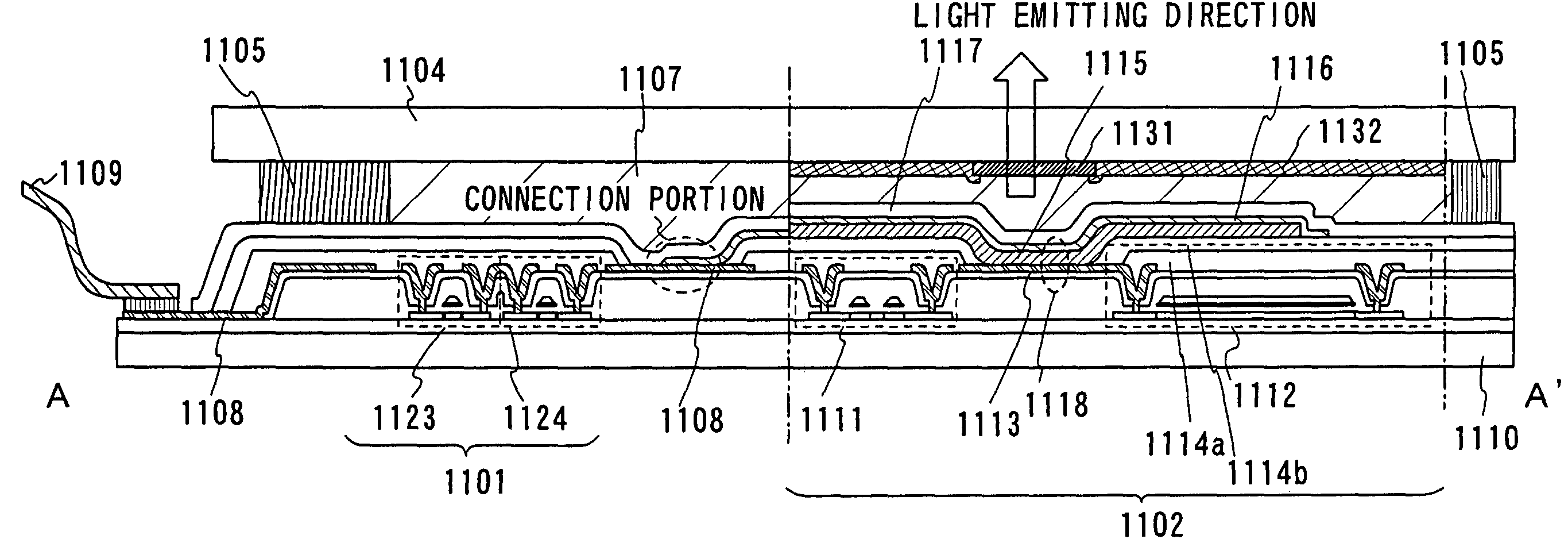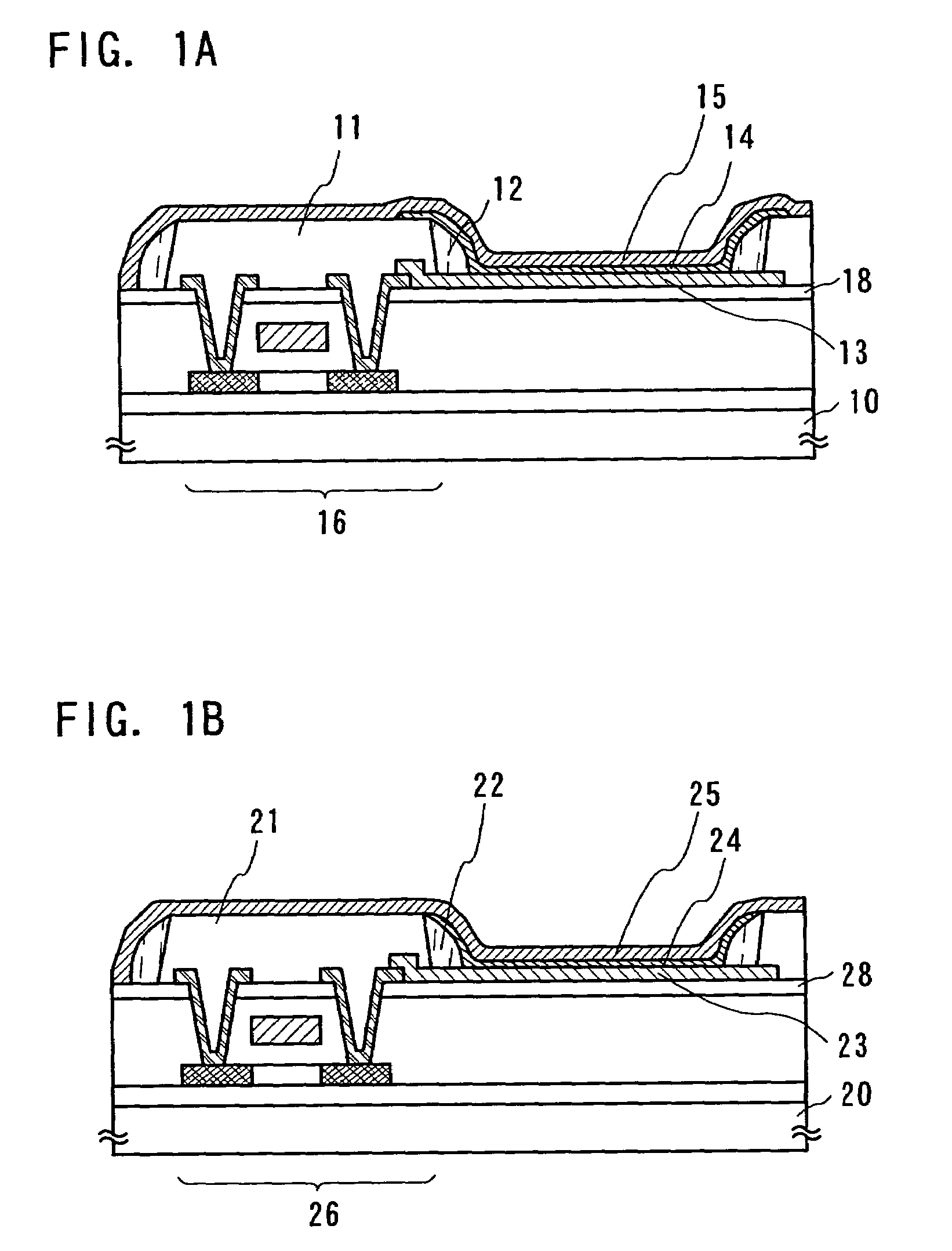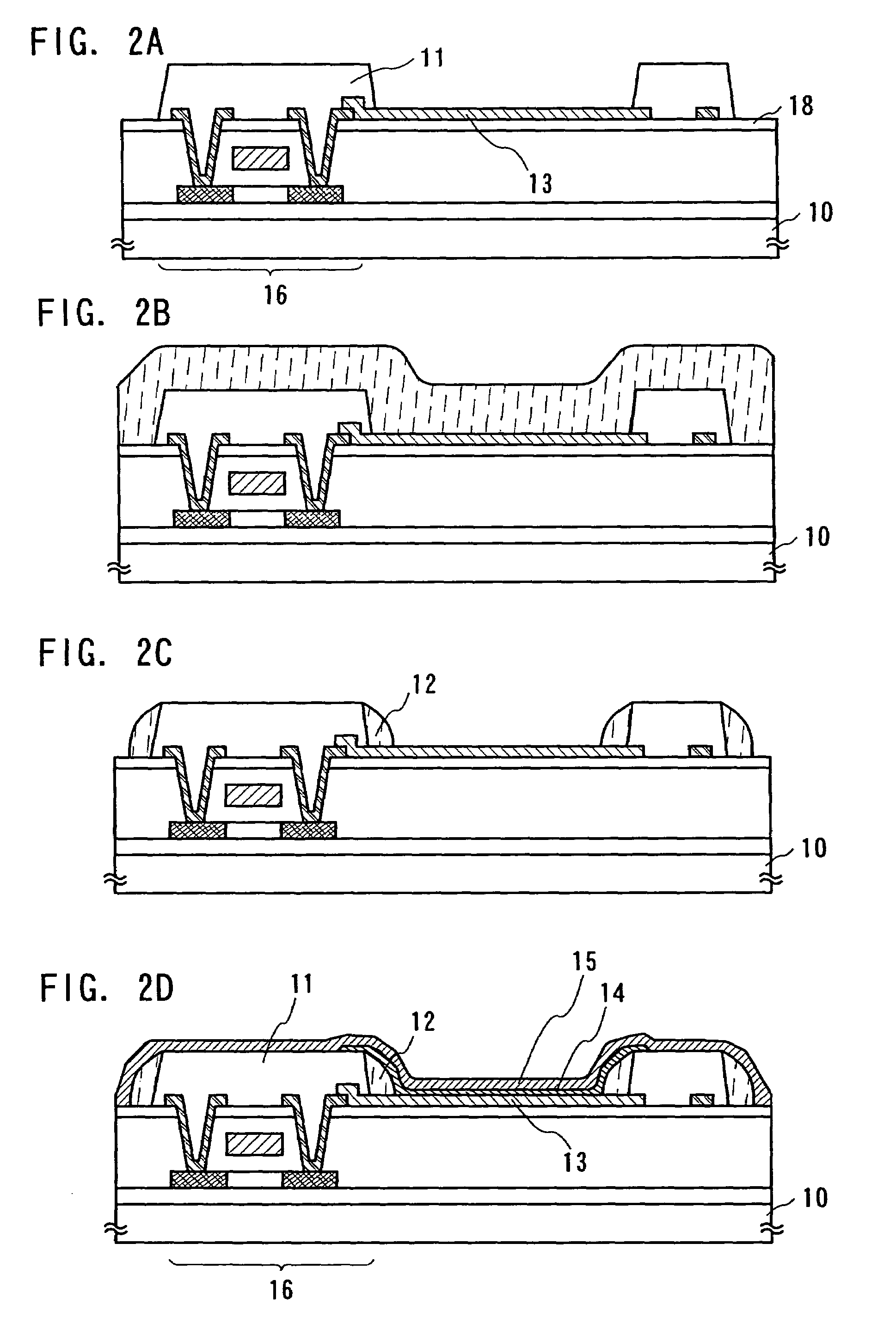Light-emitting apparatus with improved bank structure
a technology of light-emitting apparatus and bank structure, which is applied in the direction of discharge tube/lamp details, discharge tube luminescnet screens, electric discharge lamps, etc. it can solve the problems of easy damage to the electrode, easy adhesion of dust on the charged surface, and easy generation of electrostatic discharge, so as to prevent electrostatic discharge damage
- Summary
- Abstract
- Description
- Claims
- Application Information
AI Technical Summary
Benefits of technology
Problems solved by technology
Method used
Image
Examples
embodiment mode 1
[0065]The present invention is described by using an example of an active matrix light-emitting device in this embodiment mode.
[0066]In FIG. 1A, reference numeral 10 is a substrate, 11 is a first bank, 12 is a second bank, 13 is a first electrode, 14 is an organic compound layer, 15 is a second electrode, 16 is a TFT, and 18 is an insulating film. In FIG. 1A, the electrode 13 serves as an anode of a light-emitting device and the second electrode serves as a cathode of the light-emitting device, but not exclusively, the first electrode can serve as a cathode and the second electrode can serve as an anode if materials are selected appropriately.
[0067]An example of a fabrication process for forming a structure illustrated in FIG. 1A is shown in FIGS. 2A, 2B, 2C and 2D.
[0068]The TFT 16 is fabricated over the substrate 10 having an insulating surface. As materials for an interlayer insulating film of the TFT, for example, inorganic materials formed by sputtering, PCVD, or coating (silico...
embodiment mode 2
[0086]An example of preventing electrostatic discharge damage of a TFT by forming an antistatic layer during a fabrication process of an active matrix display device will be described with reference to FIGS. 3A, 3B and 3C. In FIGS. 3A, 3B and 3C, like components are denoted by like numerals as of FIG. 1A.
[0087]The TFT 16 and the first electrode 13 are formed over the substrate 10. Then, the first bank 11 to cover the edge portion of the first electrode is formed. (FIG. 3A)
[0088]An insulating film is formed over the whole surface of the substrate, and an antistatic layer 30 is formed thereon. (FIG. 3B) The electrostatic discharge damage can be prevented by forming the antistatic layer 30. Static electricity is easily charged an insulating surface. Due to this, there is a threat of adhesion of dust over the charged-surface or generating electrostatic discharge when touching another objects.
[0089]For forming the antistatic layer 30, poly(ethylenedioxythiophene) / polystyrenesulphonic aci...
embodiment mode 3
[0094]In Embodiment Mode 1, an example of forming the second bank that covers the side face of the first bank was described. In this embodiment mode, an example of forming a second bank that covers all over a first bank will be described with reference to FIG. 4A.
[0095]In FIG. 4A, reference numeral 40 is a substrate, 41 is a first bank, 42 is a second bank, 43 is a first electrode, 44 is an organic compound layer, 45 is a second electrode, 46 is a TFT, and 48a to 48c are insulating films.
[0096]An example of a fabrication process for forming the structure shown in FIG. 4A is illustrated in FIGS. 5A to 5D.
[0097]The TFT 46 is formed over the substrate 40 having an insulating surface. The TFT 46 may be formed to be an n-channel type TFT or a p-channel type TFT by a known method. Reference numeral 46a is a channel formation region, 46b, 46c are a source region or a drain region, 46d is a gate electrode, 46e, 46f are a source electrode or a drain electrode, 46g is a gate insulating film a...
PUM
 Login to View More
Login to View More Abstract
Description
Claims
Application Information
 Login to View More
Login to View More - R&D
- Intellectual Property
- Life Sciences
- Materials
- Tech Scout
- Unparalleled Data Quality
- Higher Quality Content
- 60% Fewer Hallucinations
Browse by: Latest US Patents, China's latest patents, Technical Efficacy Thesaurus, Application Domain, Technology Topic, Popular Technical Reports.
© 2025 PatSnap. All rights reserved.Legal|Privacy policy|Modern Slavery Act Transparency Statement|Sitemap|About US| Contact US: help@patsnap.com



